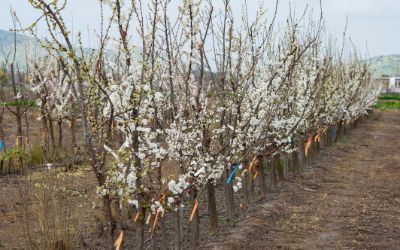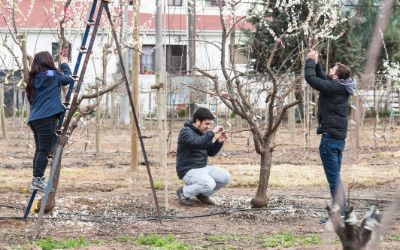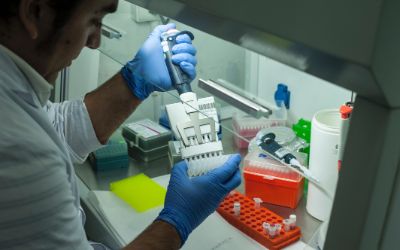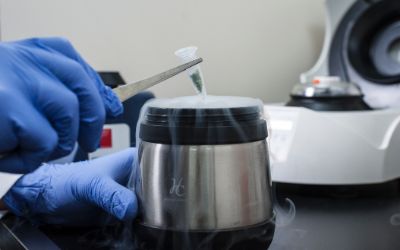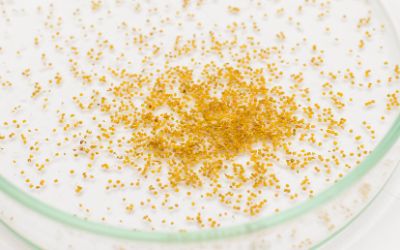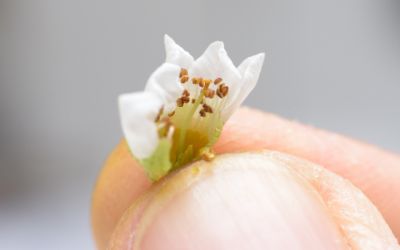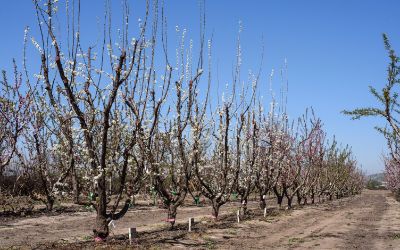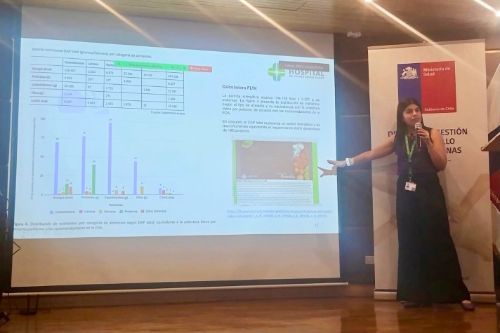A team of researchers led by Paulina Ballesta, conducting her postdoctoral work at the Plant Biology and Innovation in Agri-Food Systems Laboratory (BVISA–Nutribreeding) of the INTA, University of Chile, developed a predictive model for commercially relevant traits in Japanese plum (Prunus salicina L.), one of Chile’s key fruit export species.
The study, published in the Horticultural Plant Journal, is titled “Genomic prediction of phenological and fruit-quality traits in a multi-family Japanese plum breeding population” (https://doi.org/10.1016/j.hpj.2025.04.014) and involved researchers from INTA, the Faculty of Agricultural Sciences of the University of Chile, among others.
The research notes that Japanese plum “ranked 15th in global fruit production with 12.4 million tons in 2022, approximately 70% of which was produced by China, Romania, Serbia, Chile, and Turkey. Japanese plum is consumed as fresh fruit due to its notable sensory attributes (e.g., sweetness, texture, and flavor), nutritional value, and functional food quality.”
Like most fruit trees, Japanese plum has a long juvenile period—between four and five years from planting to fruit production. This prolonged period, coupled with the fact that most plants obtained from controlled crosses fail to meet commercial standards, poses a challenge for breeding programs.
In this context, genomic selection (GS) emerges as a tool capable of predicting from the seedling stage which individuals are most likely to meet desired attributes. “The main finding is the development of predictive models for commercially relevant traits in Japanese plum, a fruit of major importance for Chilean exports,” explains Igor Pacheco, head of the Plant Biology and Innovation in Agri-Food Systems Laboratory (BVISA–Nutribreeding) at INTA and corresponding author of the study.
GS combines genetic information and statistical models to estimate the genetic value of traits such as flowering date, fruit weight, sugar content, or acidity from genomic data, without waiting for the tree to complete its productive cycle.
Professor Pacheco explains: “Genomic selection is a genetic-statistical approach aimed at increasing the efficiency of plant breeding programs. It consists of selecting superior individuals based on predicted traits from the genome of progeny obtained through controlled crosses. Simply put, GS is akin to services that, from a DNA sample, inform on ancestry and predict susceptibility to diseases and other traits in humans—but applied to plants. The difference is that in plant breeding, more than 98% of generated individuals are not worth selecting. This is a cost problem for breeding programs, considering that fruit trees take 4 to 5 years from planting to bear their first fruit.”
“By applying genomic prediction models to newly germinated plants (through DNA extraction from all individuals in the generated families, sequencing those DNAs, and predicting via models based on these sequences), breeders could focus only on seedlings with the highest genetic potential during cultivation and field evaluation phases. This makes the development of new varieties more efficient and increases the likelihood of generating varieties that are ‘made in Chile,’ that is, adapted to local production conditions,” he adds.
In this work, more than one thousand trees were analyzed, genotyped with 11,000 molecular markers (SNPs), and evaluated over two seasons. The models achieved predictive capacities ranging from 70% to 90% depending on the trait—levels that, according to the researcher, “represent a great advantage, as the time and resources invested in developing these individuals would now be dedicated to plants that almost certainly will have the desired quality.”
The implementation of this technology would enable the creation of varieties adapted to the country’s changing climate and with high commercial value, without resorting to transgenesis or gene editing. “The impact of this result is that in Chile we will have the capacity to generate new varieties adapted to our increasingly variable environmental conditions. Moreover, it allows the generation of intellectual property for plant varieties free from genetic modification such as transgenesis or gene editing, which are still questioned by part of the population,” emphasizes Pacheco.
The work stems from a line of research initiated with an ANID postdoctoral project by Dr. Ballesta, later continued with IDeA I+D and FONDECYT Regular funding led by Pacheco. “This work represents the consolidation of our group in the establishment of predictive models. To our knowledge, we are the only group in Chile that has developed genomic prediction models in fruit trees,” the researcher affirms.
He adds that collaboration with the Fruit Quality Breeding Laboratory of the Faculty of Agricultural Sciences at the University of Chile, led by Professor Rodrigo Infante, has enabled the projection of this expertise towards advisory services for breeders and nurseries, with the aim of applying it to other fruit species and crops as well.
Photo credit: Laboratorio de Mejoramiento Genético y Calidad de la Fruta (Califrut) de la Facultad de Ciencias Agronómicas de la Universidad de Chile (Prof. Rodrigo Infante)
Reference: Paulina Ballesta, Arnau Fiol, Sebastián Ahumada, María Osorio, Javiera Ibañez, Jonathan Fresnedo-Ramírez, Freddy Mora-Poblete, Rodrigo Infante, Benjamín Battistoni, Igor Pacheco, Genomic prediction of phenological and fruit-quality traits in a multi-family Japanese plum breeding population, Horticultural Plant Journal, 2025, ISSN 2468-0141, https://doi.org/10.1016/j.hpj.2025.04.014.
Keywords: Genomic selection; high-density SNP; Prunus salicina; Bayesian methods



